|
Morocco:
West Atlas Bicycle Africa / Ibike Tours |
|||
 |
Western Atlas: Moulay Idriss | ||
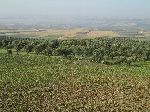
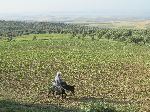

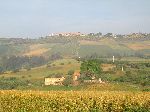 |
|||
|
Leaving Meknes in the other direction (north), the agricultural base, fertility and rural lifestyle of the area is demonstrated
on the stretch between Meknes and Moulay Idriss. The rolling hills are a
patchwork of olive orchards, wheat fields, and other field crops. The
communications antenna (right) is interesting because it is home to a number
of storks. Moving into the mountains, you go from a primarily ethnic Arab population to a primarily ethnic Imamazighen (Berber) population. |
 |
||
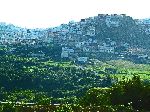
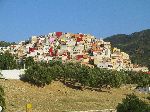
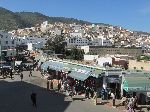
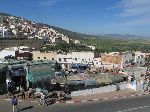 |
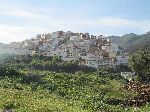 |
||
| The holy town of Moulay Idriss Zerhoune, or more commonly just Moulay Idriss, is thirty kilometers from Meknes. Moulay Idriss holds a special place in the hearts of the Moroccan people. It was here that Moulay Idriss I arrived and settled in 789, bringing with him the religion of Islam, and starting the new Idrissid Dynasty. Much of the town is whitewashed, setting it off from the green hills. There are numerous sacred sites in town, the most important of which is the mausoleum of Idris I, just off the main square. Because of this, the village is a national pilgrimage site. Until 2005, non-Muslims were not allowed in the village after sunset. They are still forbidden from entering some building in town. |
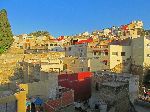 |
||
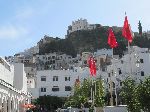
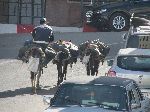
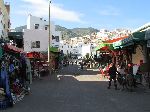
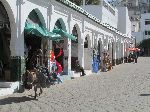 |
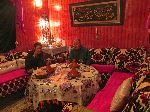 |
||
| Three kilometers west of Moulay Idriss, and lower on the hill, are the predominantly Roman ruins of Volubilis. | |||
| One of the most beautiful easily accessible mountain routes in the country is between Moulay Idress and Fes. It fits the phase "elevation is elation." Generally, the pictures speak for themselves. | |||
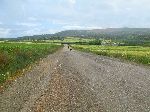 |
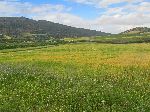
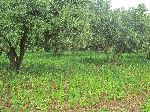
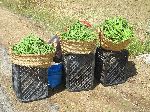
 |
 |
|
| The new crop in the area is fava beans. We saw it inter-cropped with olive trees and later for sale along the highway. | |||
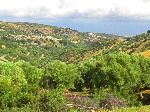 |
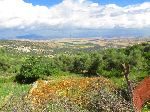 ` `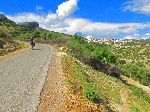
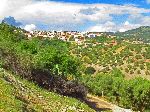
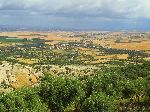 |
 |
|
| The Beni Ammar road traverses around the mountains and provides broad views, with mountain villages and deep valleys. | |||
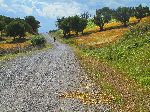 |
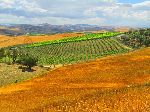
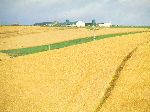
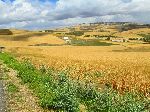
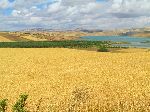 |
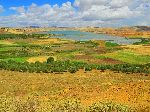 |
|
| The west side of the mountains are much greener than the east, suggesting that the hills catch a lot of the rain and create a rain shadow on the east side. Beauty happens in so many different colors and landscapes. | |||
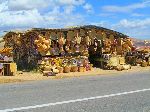 |
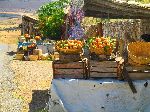
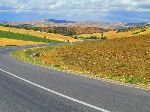
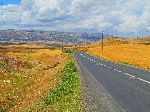
 |
||
| There were roadside merchants only after the mountain road joined a busier highway; one specialized in a variety of basketry, and several others were selling predominately oranges. The heavy farm equipment would be necessary for harvesting the hundreds of acres of grain. | |||
|
|
|||
|
|
|
|